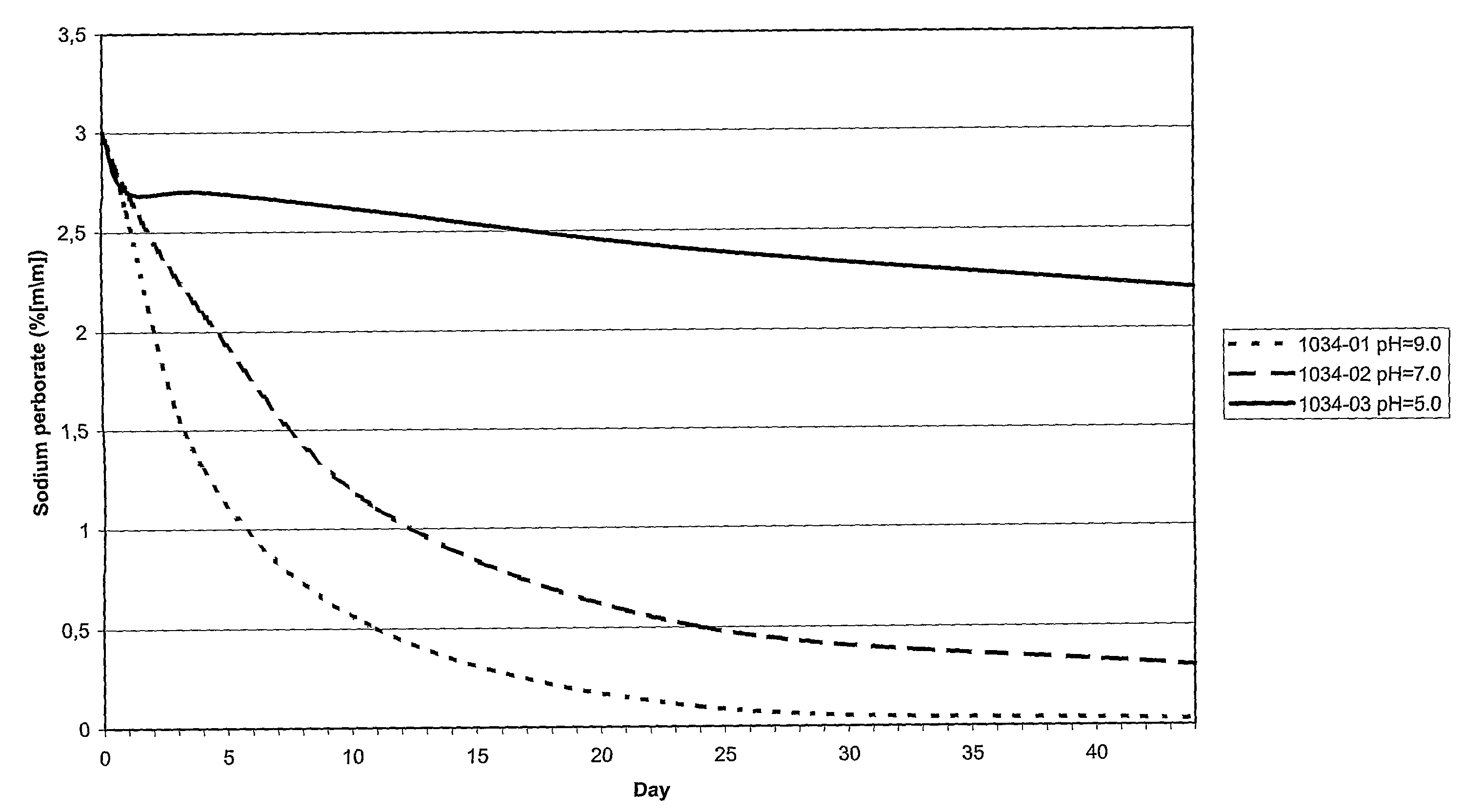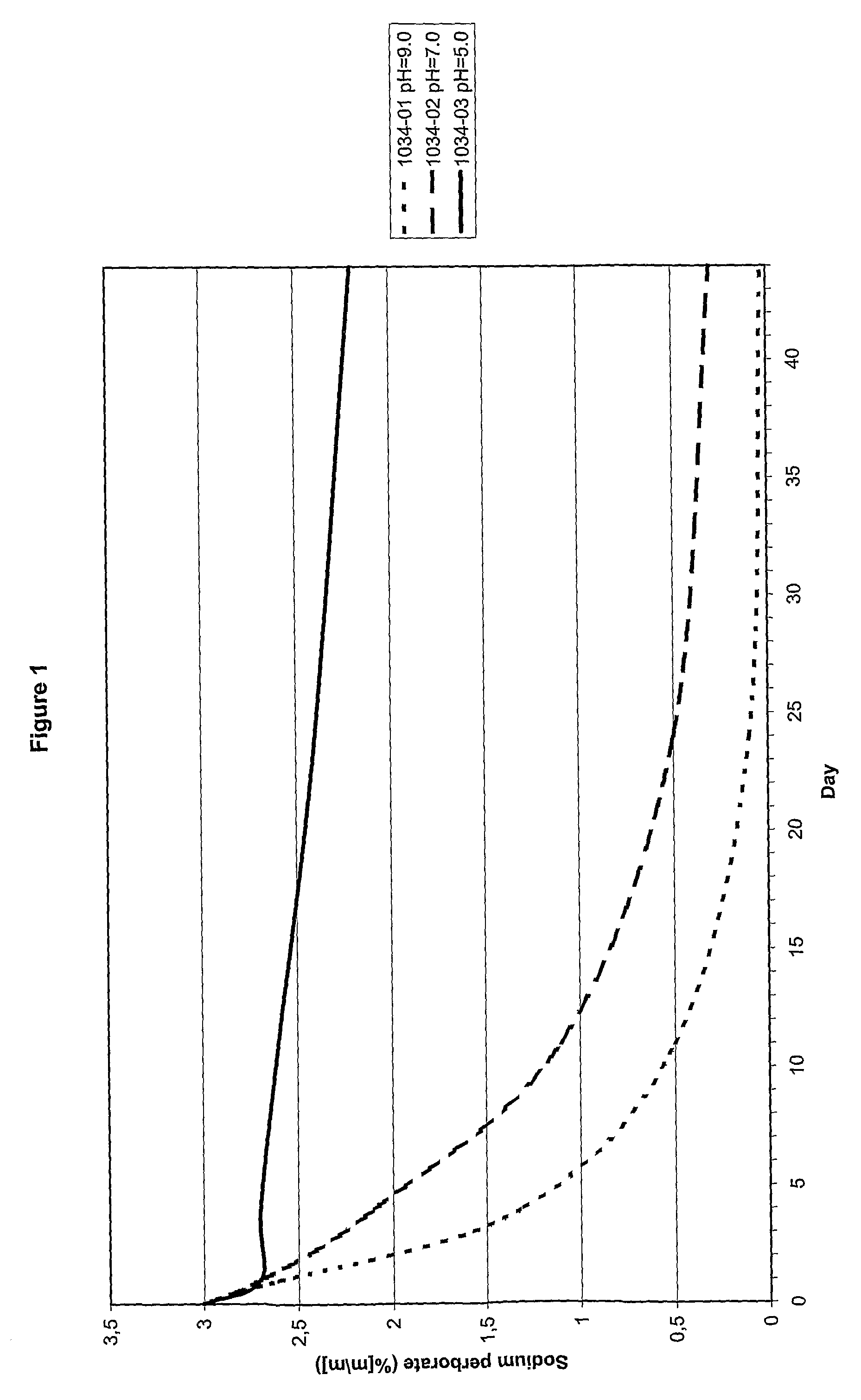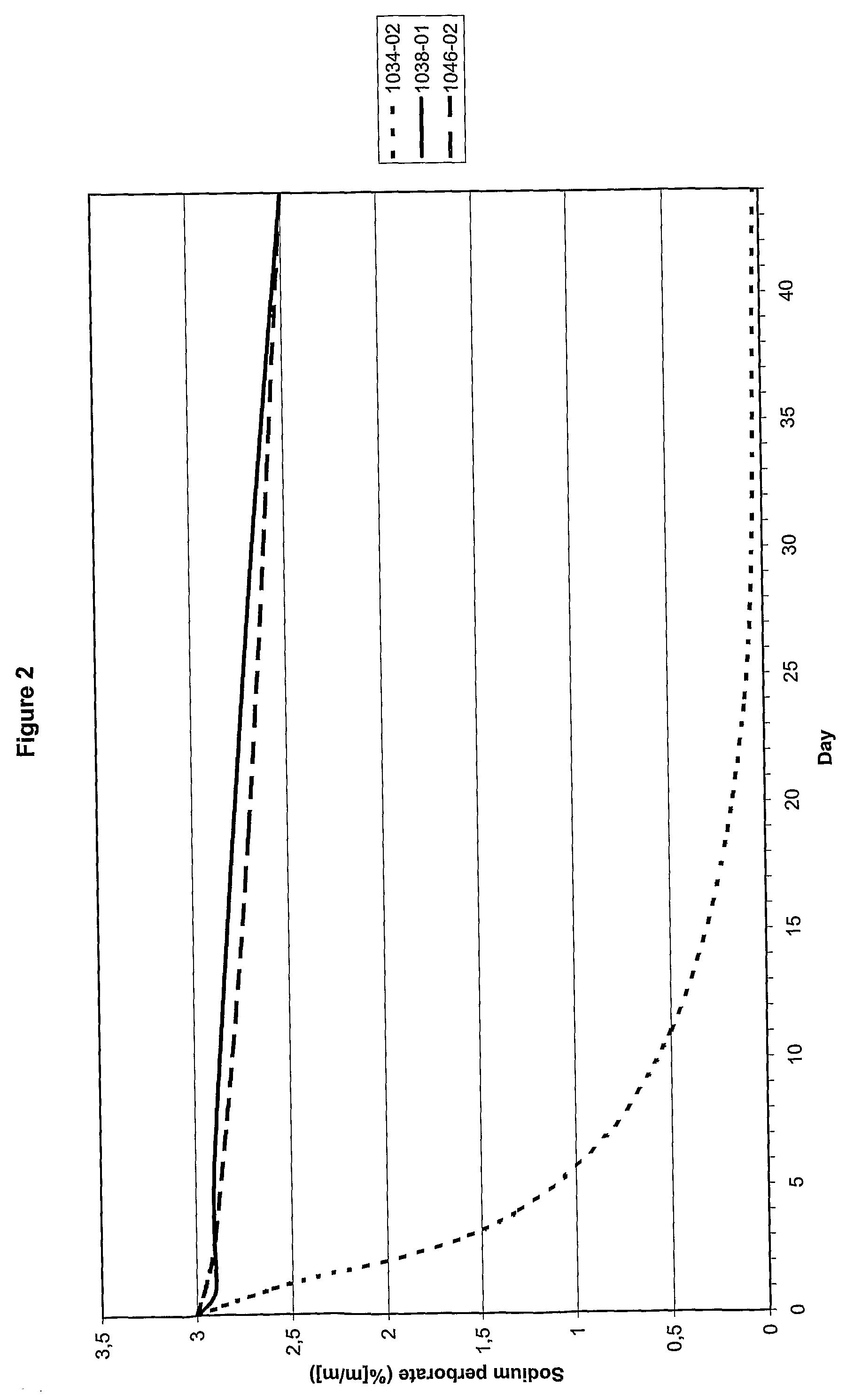Stabilised Oxygen Releasing Composition
a technology of liquid oxygen and composition, which is applied in the direction of drug composition, biocide, hair cosmetics, etc., can solve the problems of unstable composition, uncontrollable release of active components, oxygen, by pharmaceutical or cosmetic compositions, and rapid decrease of composition activity during use or application
- Summary
- Abstract
- Description
- Claims
- Application Information
AI Technical Summary
Benefits of technology
Problems solved by technology
Method used
Image
Examples
example 1
[0042]Of three compositions (see Table 1) the rate at which the content sodium perborate decreased as function of the pH was determined. The results are shown in FIG. 1.
TABLE 1Composition1034-011034-021034-03pH9.07.05.0NaBO3•H2O3.0%. by weight3.0%. by weight3.0%. by weightGlycerol20.0% by weight20.0% by weight20.0% by weight
The results indicate that at higher pH the content of sodium perborate decreases at a higher rate.
example 2
[0043]Of three compositions (see Table 2) the effect of oxygen donor stabilising agent (c) on the rate at which the content sodium perborate decreased was determined. The results are shown in FIG. 2.
[0044]The results demonstrate that the addition of component (c) has a remarkable effect on the stability of the composition, i.e. that the active component is far more slowly released. The addition of component (a) has no detrimental influence on the stabilising effect caused by component (c).
TABLE 2Composition1034-021038-011046-02pH7.07.07.0NaBO3•H2O 3.0% by weight 3.0% by weight3.0% by weightGlycerol20.0% by weight20.0% by weight20.0% by weight Component——5.0% by weight(a)1Component—0.50% by weight2.0% by weight(c)21Aqueous solution of 50:50 (w / w) of glycerol and 4% sodium hypochlorite in water.2Anhydrous sodium gluconate.
example 3
[0045]Compositions of skin care products according to the invention are disclosed in Table 3.
TABLE 3Compo-nentsSkin careSkin careSkin careSkin careSkin care(% wt.)shampooshower balmskin foamskin balmskin sprayWater73.5566.3368.9677.2371.96Comp. (a)1.651.651.651.651.65Comp. (b)0.290.290.290.290.29Comp. (c)0.500.500.500.500.50Liquid15.2415.1415.6014.3920.60binderDeter-10.6715.9013.000.000.00gentsPolya-0.000.000.006.000.00crylamideEthanol0.000.000.000.005.00
PUM
| Property | Measurement | Unit |
|---|---|---|
| pH | aaaaa | aaaaa |
| pH | aaaaa | aaaaa |
| concentrations | aaaaa | aaaaa |
Abstract
Description
Claims
Application Information
 Login to View More
Login to View More - R&D
- Intellectual Property
- Life Sciences
- Materials
- Tech Scout
- Unparalleled Data Quality
- Higher Quality Content
- 60% Fewer Hallucinations
Browse by: Latest US Patents, China's latest patents, Technical Efficacy Thesaurus, Application Domain, Technology Topic, Popular Technical Reports.
© 2025 PatSnap. All rights reserved.Legal|Privacy policy|Modern Slavery Act Transparency Statement|Sitemap|About US| Contact US: help@patsnap.com



